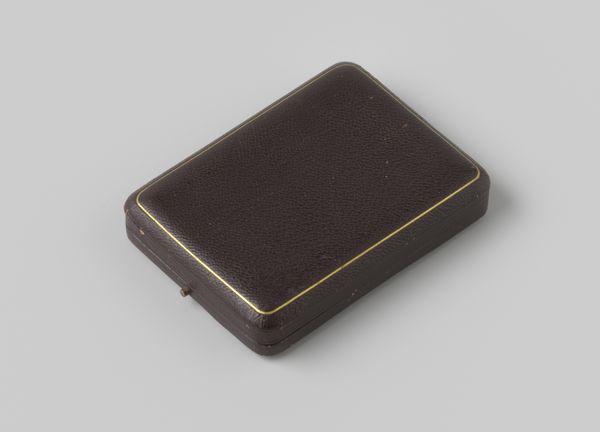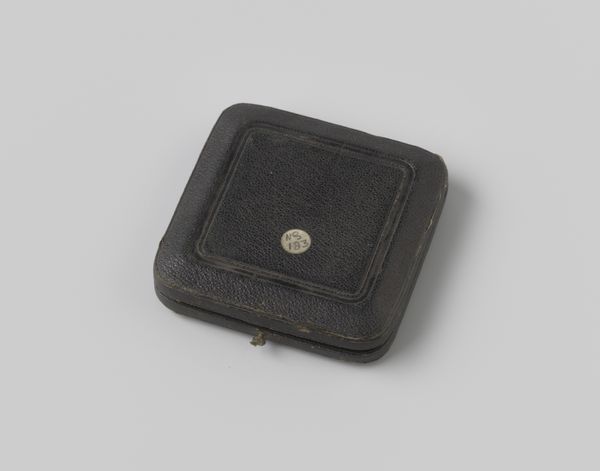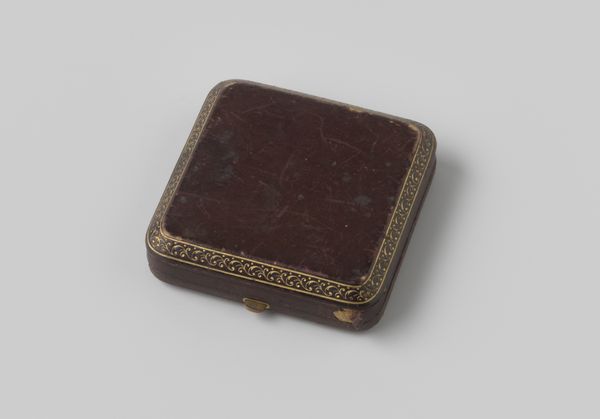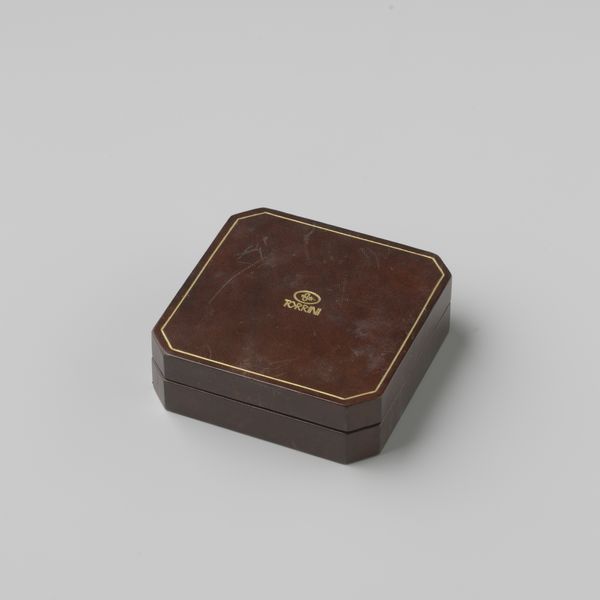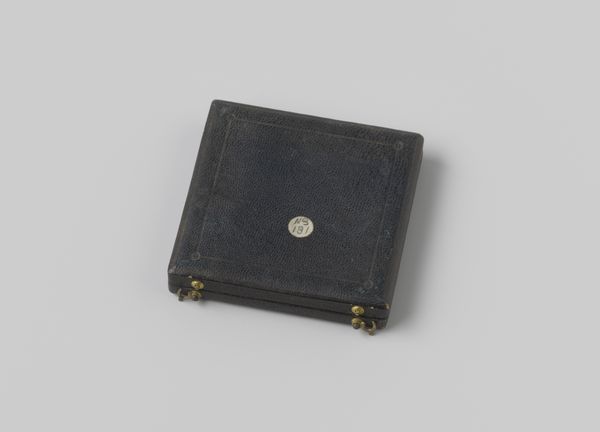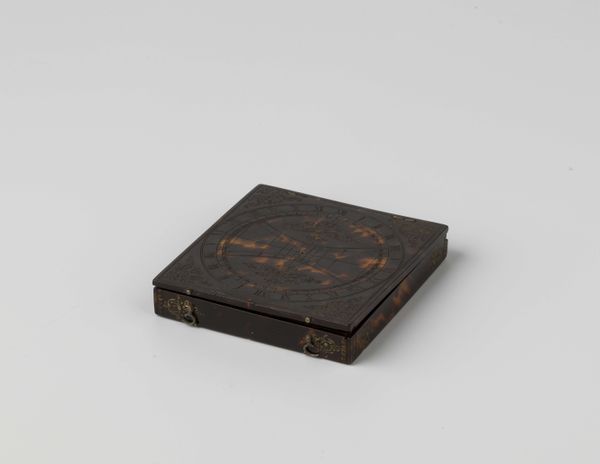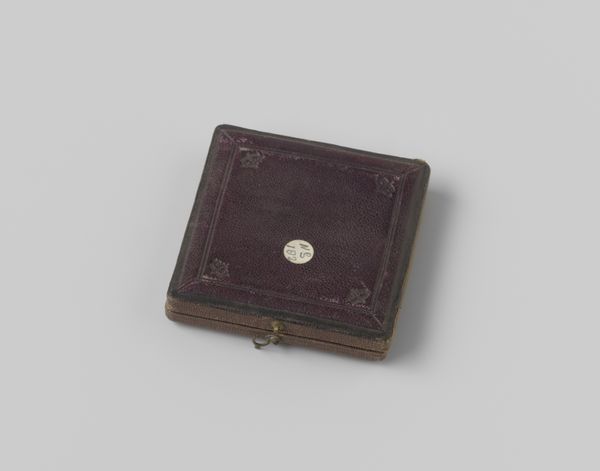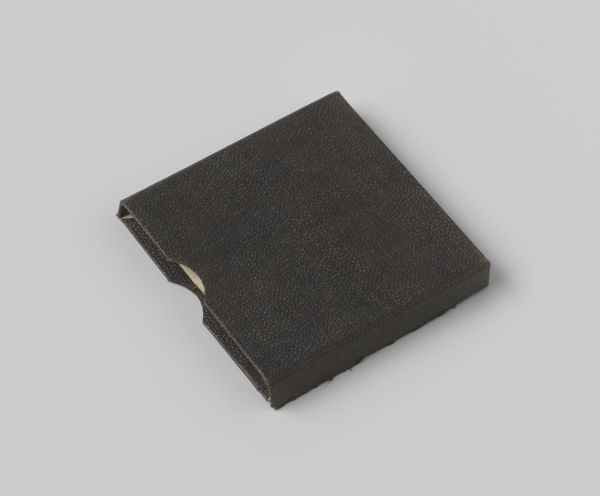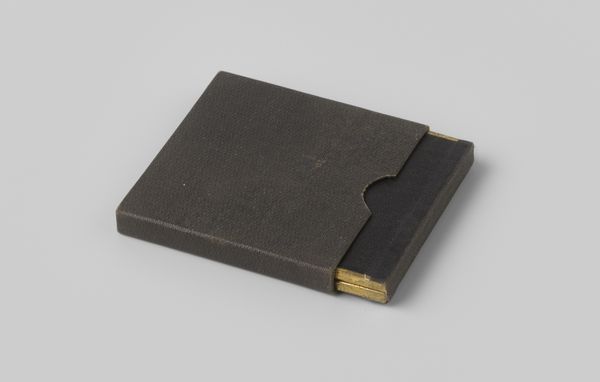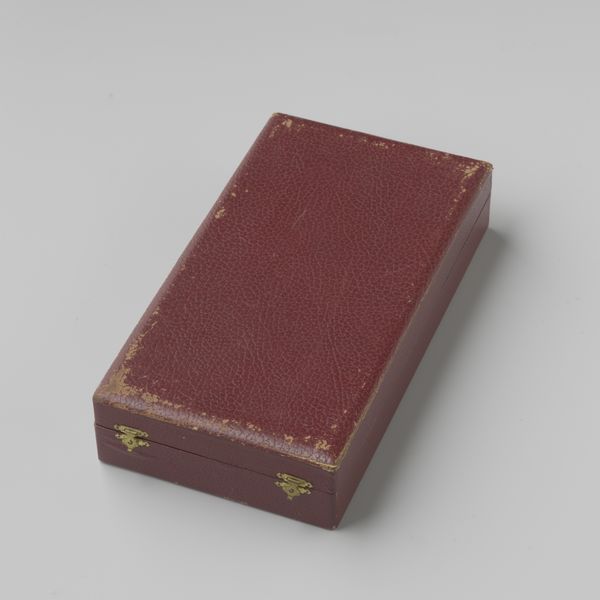
photography
#
photography
#
decorative-art
Dimensions: length 8.5 cm, width 8.5 cm, depth 2 cm
Copyright: Rijks Museum: Open Domain
Editor: Here we see a photograph, likely of a decorative-art piece, titled "Doos behorend bij een bronzen penning" or "Box belonging to a bronze medal" made in 1898 by Bart van Hove, housed at the Rijksmuseum. What strikes me is its plainness, its unadorned appearance seems almost… anti-monumental. How do you read it? Curator: This photograph provides insight into late 19th-century object presentation and, by extension, value systems. Museums, burgeoning at the time, served as places of civic instruction as much as art appreciation. Think about the cultural context: This isn’t just a box, but an artifact mediating a bronze medal's significance. What kind of imagery might the medal inside possess? Editor: It could have all sorts of political or commemorative imagery, right? Would this box signal the medal's significance, imbuing it with more public authority? Curator: Precisely. The box serves as a visual announcement. Its formal design, that restrained luxury of the period—suggests not mere containment but ceremonial presentation. The gold trim, for example, signals value while maintaining decorum. How do you see its relationship to notions of public memory and commemoration? Editor: It almost fades into the background! So unlike modern-day flashy displays. Curator: And this is key. Back then, the goal was less about spectacular display, and more about cultivating informed citizenship and demonstrating societal values. Editor: So the box isn't just about the object; it tells us about how people wanted to view themselves, their history, and their society. Curator: Exactly. It is an eloquent statement on the role of art as a tool for nation-building and public pedagogy.
Comments
No comments
Be the first to comment and join the conversation on the ultimate creative platform.
